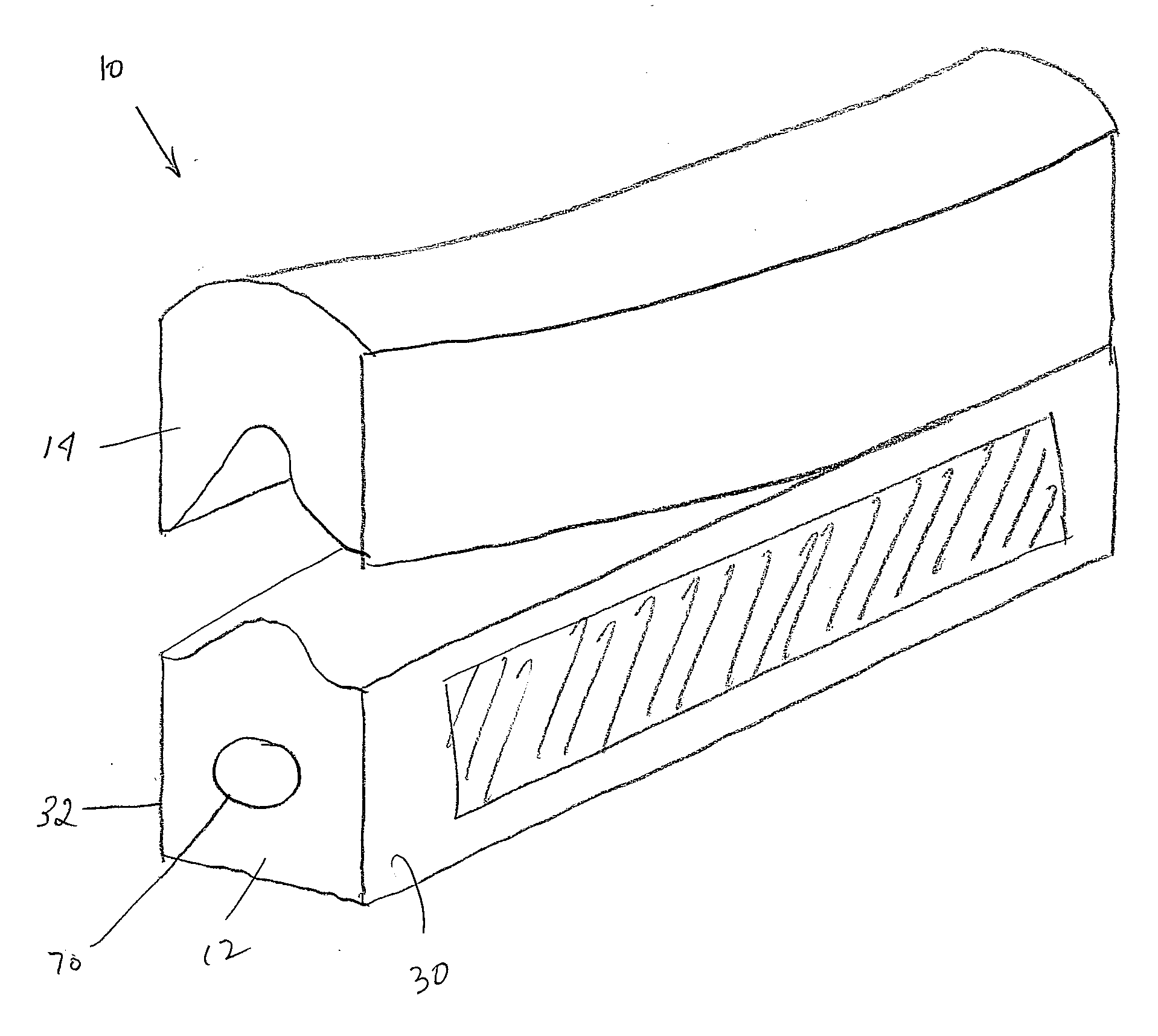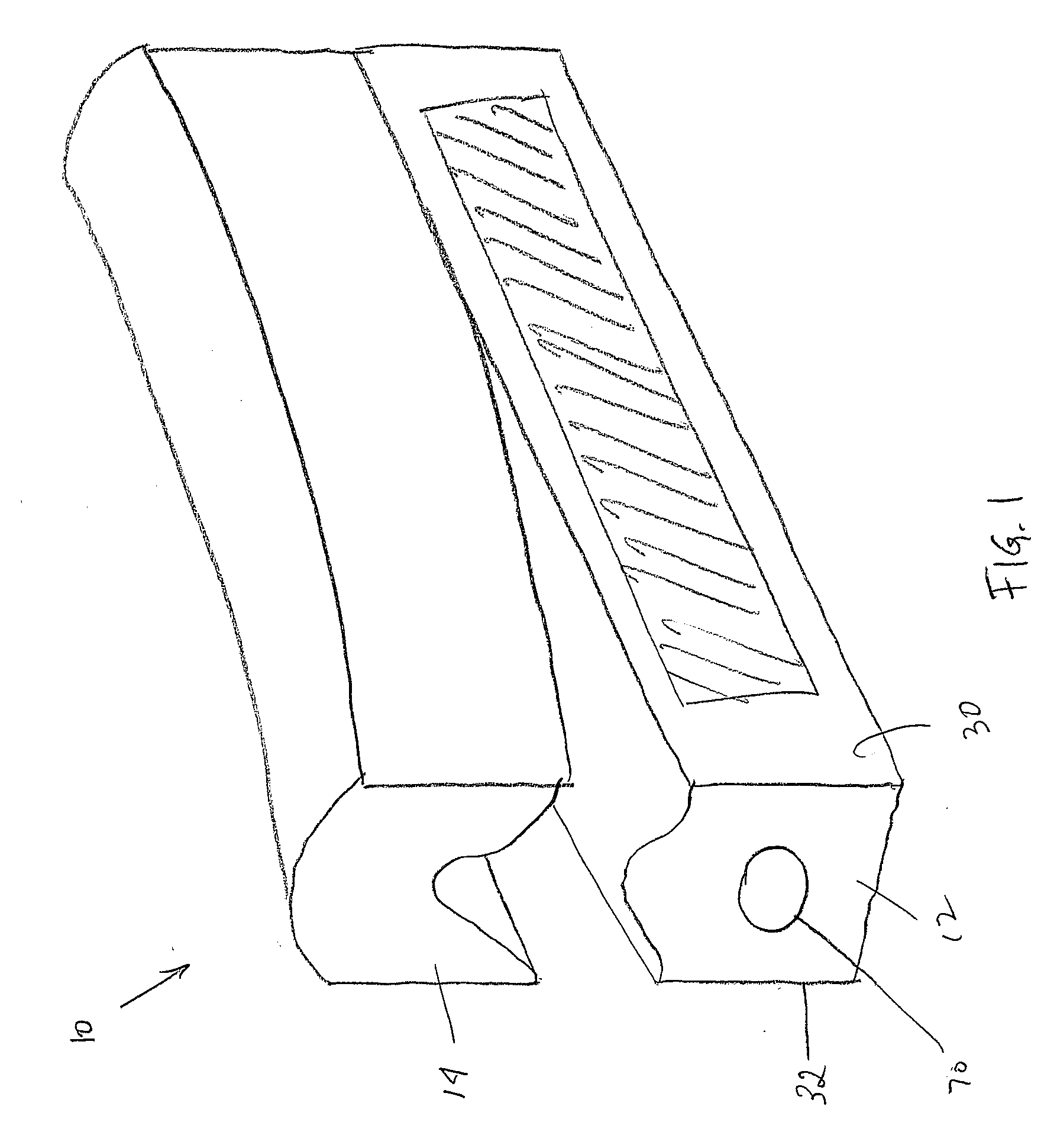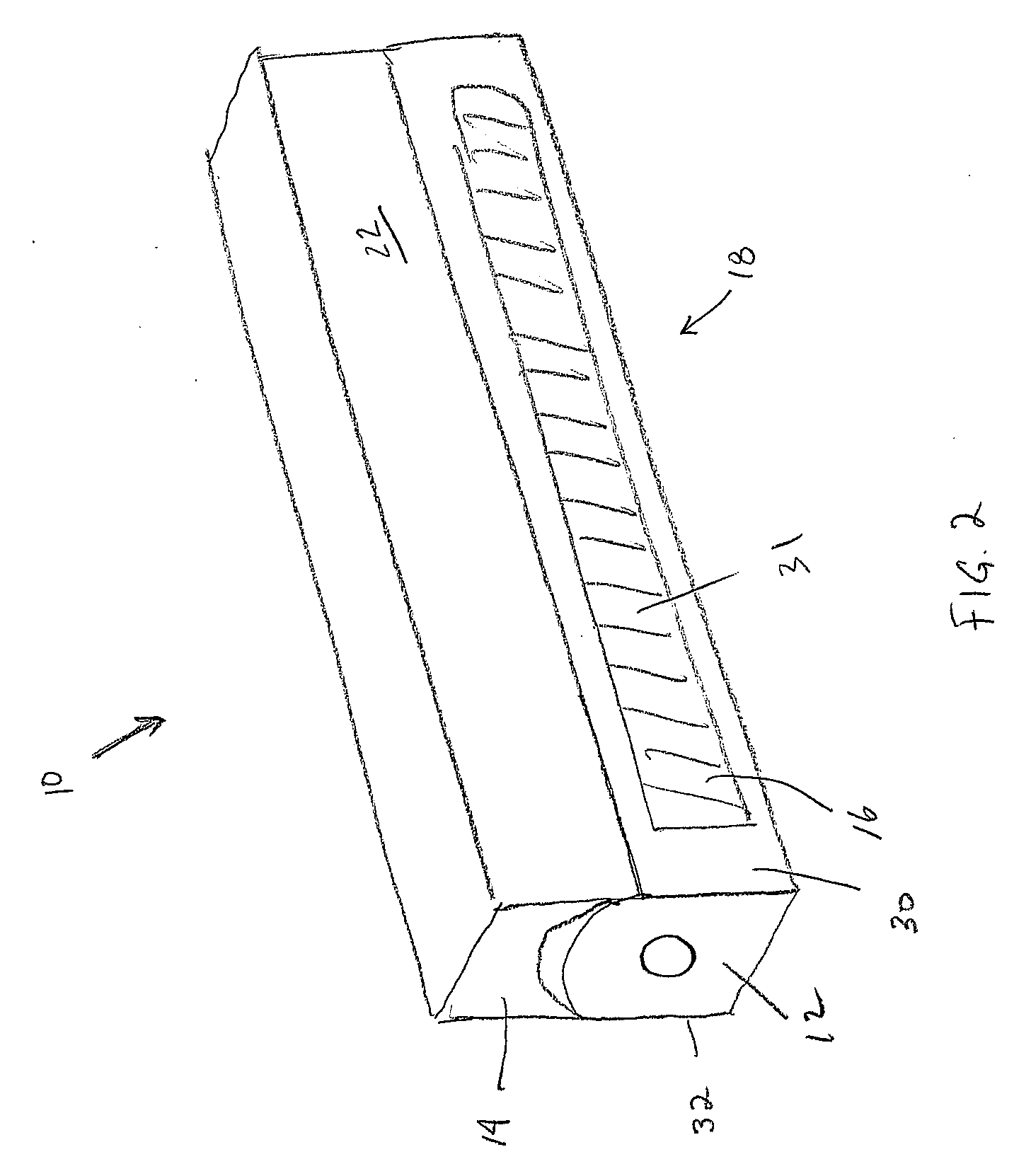Joint Materials and Configurations
a technology of configuration and joint space, applied in the direction of joint tightening/covering, engine sealing, construction, etc., can solve the problems of difficult, if not impossible, to cut joint spaces adjacent to fenestrations or other wall penetrations, difficult to cut joint spaces on vertical surfaces or from scaffolding, and high cos
- Summary
- Abstract
- Description
- Claims
- Application Information
AI Technical Summary
Benefits of technology
Problems solved by technology
Method used
Image
Examples
Embodiment Construction
[0048]While this invention may be embodied in many different forms, there are described in detail herein specific preferred embodiments of the invention. This description is an exemplification of the principles of the invention and is not intended to limit the invention to the particular embodiments illustrated.
[0049]For the purposes of this disclosure, like reference numerals in the figures shall refer to like features unless otherwise indicated.
[0050]As indicated above, the present invention is directed to a variety of embodiments. A first embodiment is depicted in FIG. 1, wherein a joint spacer is shown generally at 10. The joint spacer 10 is comprised of a first component 12, a second component 14, and an adhesive 16.
[0051]The joint spacer 10 has a first state shown generally at 18, as depicted in FIG. 2, and a second state, shown generally at 20, as depicted in FIG. 3. Referring now to FIG. 2, the joint spacer 10, in the first state, is a single or unitary structure 22. That is...
PUM
 Login to View More
Login to View More Abstract
Description
Claims
Application Information
 Login to View More
Login to View More - R&D
- Intellectual Property
- Life Sciences
- Materials
- Tech Scout
- Unparalleled Data Quality
- Higher Quality Content
- 60% Fewer Hallucinations
Browse by: Latest US Patents, China's latest patents, Technical Efficacy Thesaurus, Application Domain, Technology Topic, Popular Technical Reports.
© 2025 PatSnap. All rights reserved.Legal|Privacy policy|Modern Slavery Act Transparency Statement|Sitemap|About US| Contact US: help@patsnap.com



